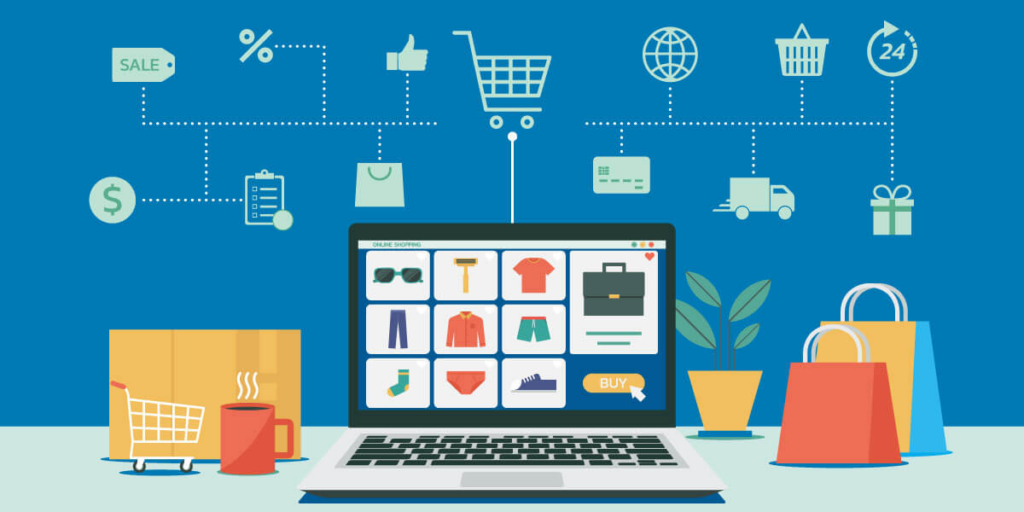
Key Takeaways
- Ecommerce merchandising is the art and science of making online shopping more appealing, easier to navigate, and more enjoyable to shop.
- Effective ecommerce merchandising leads to increased sales by improving the online shopping experience for customers and establishing brand identity and customer loyalty.
- There are 10 tried and proper ecommerce merchandising techniques, including understanding your target audience, cross-selling and upselling, effective product categorization, and personalized product recommendations.
Attention all online retailers! Are you struggling to drive sales on your eCommerce site?
Are you looking for ways to make your online store stand out from the competition? Look no further than eCommerce merchandising!
Ecommerce merchandising is the key to creating a shopping experience that attracts and converts customers.
Using various merchandising techniques, you can optimize your online store’s layout, product display, and promotion to create a seamless and enjoyable shopping experience for your customers.
But with so many eCommerce merchandising techniques out there, how do you know which ones to use?
Fear not – in this article, we’ll share what eCommerce merchandising is and the importance and 10 tried and proper merchandising techniques that will help you drive sales and increase customer satisfaction on your eCommerce site.
So, buckle up and get ready to supercharge your eCommerce site with these 10 eCommerce merchandising techniques.
What is eCommerce merchandising?

Have you ever visited an online store that confused and frustrated you?
You couldn’t find the products you were looking for, or the layout was so cluttered that it was difficult to navigate. This is where eCommerce merchandising comes in.
Ecommerce merchandising is like the superhero of online shopping – it swoops in to save the day by making online stores more visually appealing, easier to navigate, and more enjoyable to shop.
From personalized product recommendations to eye-catching product displays, eCommerce merchandising is all about creating a shopping experience that delights and excites customers.
And when customers are happy, they’re more likely to purchase and return for more.
In short, eCommerce merchandising is the art and science of making online shopping more awesome.
Whether you’re an online retailer or a shopper, it’s worth paying attention to – after all, who doesn’t love a great shopping experience?
Importance of eCommerce merchandising
Boosts sales
Effective eCommerce merchandising can lead to increased sales by improving the online shopping experience for customers.
By organizing products to make them easy to find and displaying them in an appealing manner, you can encourage customers to make a purchase.
Enhances customer satisfaction
Ecommerce merchandising can also enhance customer satisfaction by providing a seamless and personalized shopping experience.
This can include features such as personalized product recommendations, targeted email marketing campaigns, and user-generated content.
For instance, Sephora’s online store offers personalized product recommendations based on customers’ skin type, skin tone, and preferences.
Establishes brand identity
It can help establish your brand’s identity and differentiate your online store from competitors.
By using consistent branding elements, such as color schemes, typography, and imagery, you can create a cohesive and memorable brand experience.
Improves customer loyalty
A well-executed eCommerce merchandising strategy can also help improve customer loyalty by providing a personalized and engaging shopping experience.
This can include features such as loyalty programs, personalized product recommendations, and user-generated content.
For instance, Amazon Prime’s membership program offers exclusive benefits, such as free two-day shipping, to encourage customer loyalty.
Why do you need eCommerce merchandising strategy?
A well-planned eCommerce merchandising strategy is essential to the success of your online store.
Without a clear strategy, your online store may lack consistency in its product display and customer engagement approach.
This can result in confusion and frustration for customers, leading to lower conversion rates and decreased sales.
A merchandising strategy helps align your marketing and sales efforts, ensuring that your online store is optimized for customer experience and revenue generation.
You can create a cohesive and effective online store that engages and converts your target audience by focusing on product presentation, placement, and promotion.
10 eCommerce merchandising strategies
Understanding your target audience
As an eCommerce merchandiser, one of the most important things you can do is understand your target audience and their needs.
This will allow you to create a personalized experience for each customer.
For example, if your target audience is young professionals who value convenience, you should focus on offering fast and free shipping options.
Cross-selling and upselling
Cross-selling and upselling are effective techniques for increasing sales.
Cross-selling involves suggesting complementary products to a customer, while upselling involves offering a higher-priced alternative to the product they are considering.
You can increase the average order value and maximize revenue by presenting customers with these options.
Product categorization
Effective product categorization can help customers find what they’re looking for quickly and easily.
Ecommerce merchandisers should consider creating categories based on product type, price range, or occasion.
This can help customers navigate your site more efficiently and find their needed products.
Product recommendations
Personalized product recommendations can help customers find products that match their interests and preferences.
Ecommerce merchandisers can use customer data and browsing history to make these recommendations.
This can help increase customer satisfaction as well as loyalty and ultimately drive sales.
User-generated content
User-generated content like product reviews and customer photos can help build trust and increase sales.
Ecommerce merchandisers can encourage customers to share their experiences with products by offering incentives or creating social media campaigns.
This can help create a community around your brand and foster customer engagement.
Limited time offers
Creating a sense of urgency can help drive sales.
Ecommerce merchandisers can offer limited-time discounts, flash sales, or exclusive deals to encourage customers to make a purchase.
This can help increase the conversion rate and drive revenue.
Visual merchandising
Visual merchandising involves creating an appealing as well as engaging shopping experience using images, videos, and other visual elements.
Ecommerce merchandisers can use high-quality product photography or videos to showcase products and create a visually stunning online store.
This can capture customers’ attention and encourage them to make a purchase.
Search engine optimization (SEO)
Optimizing product pages for search engines can help increase visibility and drive traffic to an eCommerce site.
Ecommerce merchandisers should use relevant keywords, create unique product descriptions, and optimize meta tags and titles.
This can help improve your site’s ranking on search engines and increase organic traffic.
Product bundling
Bundling products together can increase sales by offering customers a discount when they purchase multiple items.
It should consider bundling products that complement each other or that are frequently purchased together.
This can increase the average order value and drive revenue.
A/B testing
A/B testing involves creating two versions of a web page or product page and testing which version performs better.
Ecommerce merchandisers can use A/B testing to optimize product pages, pricing strategies, and other elements of an online store to increase sales.
This can help identify the most effective merchandising techniques for your specific audience and drive revenue growth.
Conclusion
Ecommerce merchandising is an essential ingredient for any successful online store.
By implementing the ten merchandising techniques we’ve discussed in this article, you can create a shopping experience that attracts and converts customers and fosters long-term loyalty.
In a highly competitive online marketplace, eCommerce merchandising is the key to standing out from the crowd and building a strong brand reputation.
By prioritizing the needs and preferences of your customers, you can create a shopping experience that is both enjoyable as well as memorable.
So, if you want to take your eCommerce business to the next level, don’t underestimate the power of eCommerce merchandising.
By incorporating these proven techniques into your strategy, you’ll be well on your way to achieving your sales and marketing goals and building a loyal customer base for years to come.
